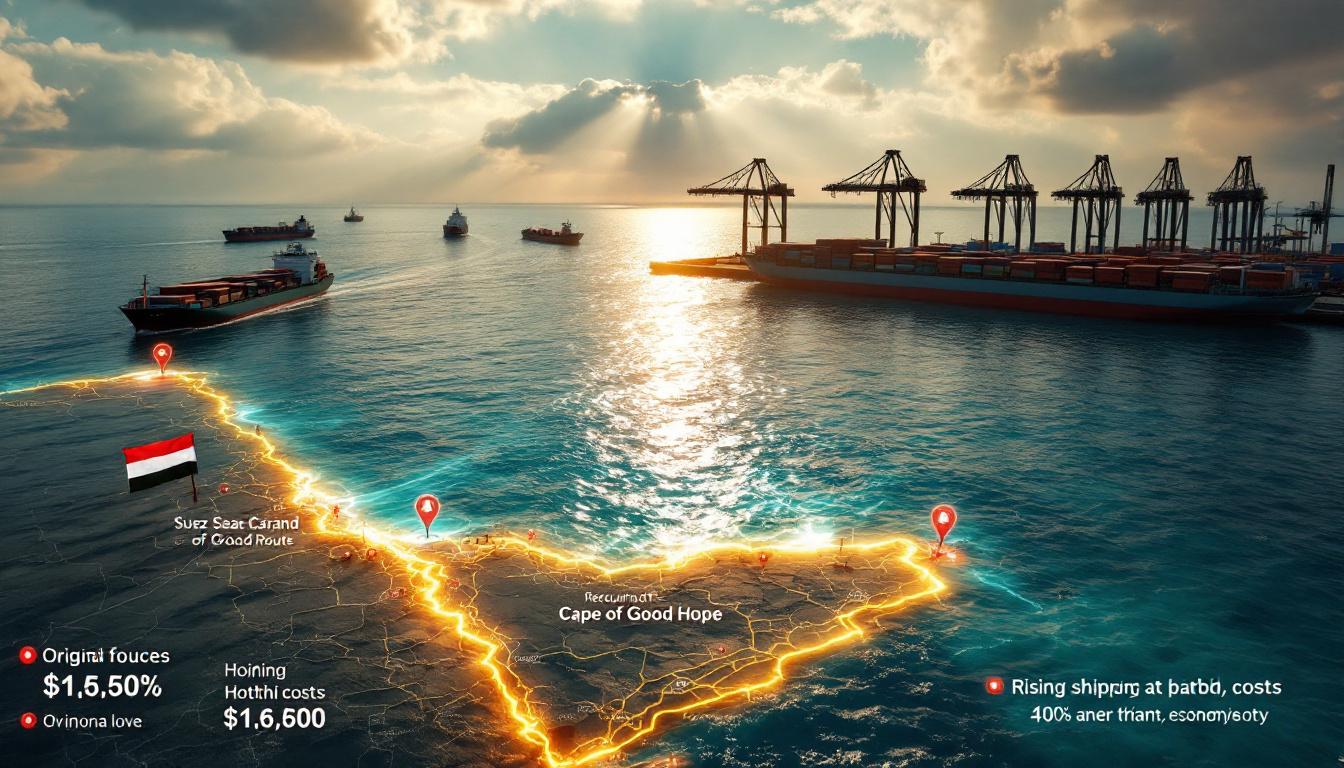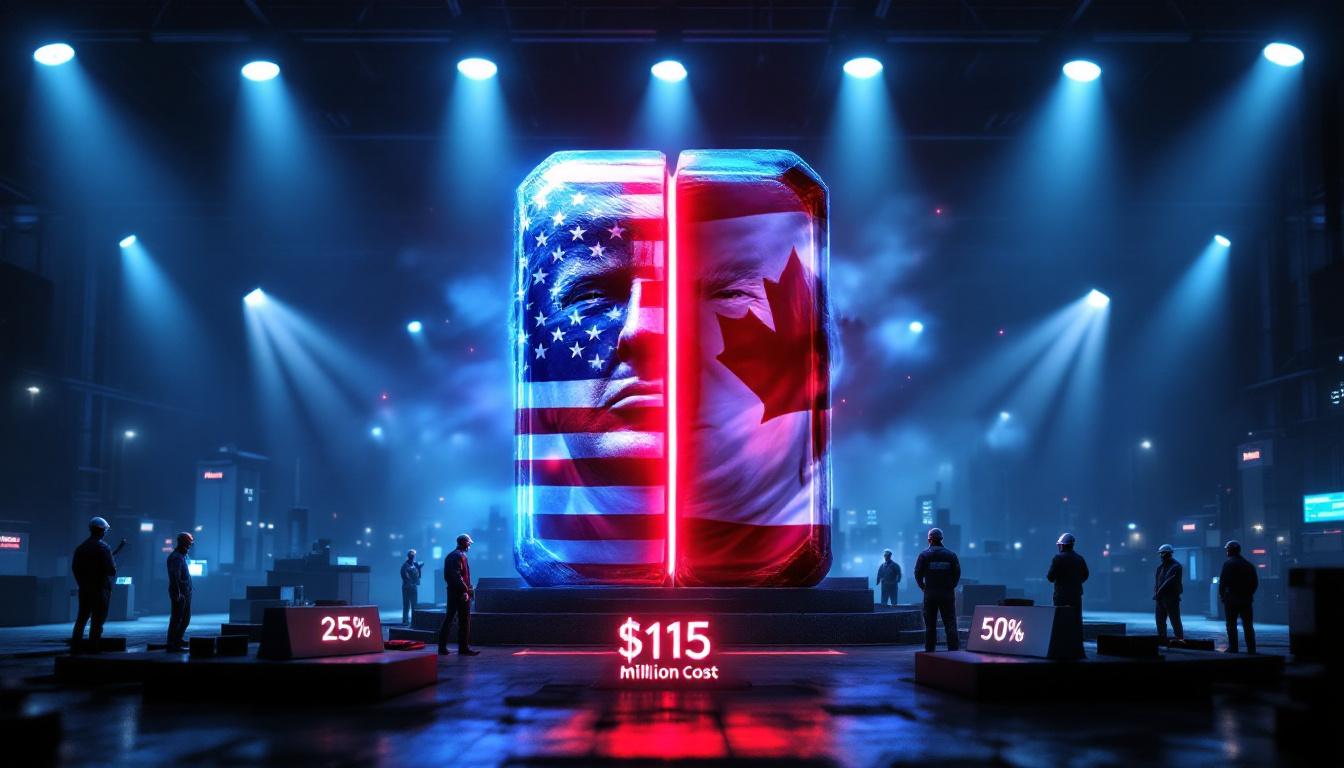EU Recognition of Talga's Luleå Refinery: Strategic Implications for European Net-Zero Industry
In a landmark decision underscoring Europe's commitment to clean energy autonomy, Talga Group's Luleå Anode Refinery has been officially recognized as a strategic project under the EU Net-Zero Industry Act (NZIA). This designation, regulated under EU regulation 2024/1735, places the Swedish facility among the first wave of projects to receive this prestigious classification, highlighting its critical role in Europe's transition to a sustainable energy ecosystem.
The recognition follows a previous €70 million ($75.5 million) grant from the EU Innovation Fund awarded in October 2024, demonstrating substantial institutional confidence in Talga's integrated approach to battery material production. As Europe races to reduce dependency on imported battery materials, this designation represents not merely administrative recognition but a strategic pivot in how the EU secures its clean energy supply chains.
What is the Talga Luleå Anode Refinery Project?
The Luleå Anode Refinery forms a cornerstone of Talga Group's integrated Vittangi Anode Project in northern Sweden. This vertically integrated operation will produce 19,500 tonnes per annum (tpa) of Talnode-C, Talga's proprietary natural graphite battery anode material, specifically engineered for high-performance lithium-ion batteries.
What distinguishes this project is its complete integration—from mining operations at Talga's wholly-owned Swedish graphite deposits to the finished anode material production. This unique mine-to-anode approach eliminates multiple transportation and processing steps typical in conventional supply chains, significantly reducing the carbon footprint associated with battery material production.
The facility's resource base provides remarkable scalability, with capacity to expand production beyond 100,000 tpa as European battery demand continues its exponential growth trajectory. This scalability positions Talga to potentially supply a significant percentage of Europe's projected anode material requirements through 2030 and beyond.
Key Features of the Luleå Refinery
The refinery incorporates advanced manufacturing processes designed specifically for minimal environmental impact. Unlike conventional anode production facilities, particularly those in Asia that rely heavily on synthetic graphite requiring energy-intensive processing at temperatures exceeding 2800°C, Talga's facility utilizes natural graphite with inherently lower processing requirements.
Strategic location in Sweden provides multiple advantages, including access to renewable energy sources, efficient transportation infrastructure to European battery gigafactories, and proximity to Talga's graphite mines—further reducing logistics-related emissions. This positioning aligns perfectly with the EU's strategic goals of shortening supply chains and minimizing transportation-related environmental impacts.
Why Has the EU Designated It as a Net-Zero Strategic Project?
The EU Net-Zero Industry Act represents a cornerstone of Europe's industrial policy framework, designed to accelerate the continent's transition toward climate neutrality. By recognizing projects as strategically important under this regulation, the EU signals their critical nature in achieving broader climate and industrial sovereignty objectives.
Talga's designation by the Swedish Agency for Economic and Regional Growth highlights the project's alignment with multiple EU strategic priorities, including domestic production of critical raw materials, clean technology manufacturing, and industrial decarbonization. This recognition complements the earlier classification of Talga's natural graphite mine as a strategic project under the EU Critical Raw Materials Act, creating a comprehensive framework of support across Talga's entire value chain.
The designation is particularly noteworthy as the EU aims to produce 40% of its clean technology needs domestically by 2030—a target that cannot be achieved without securing strategic battery material supply chains within European borders.
Strategic Significance of the Designation
The strategic project status recognizes Talga's potential contribution to reducing Europe's nearly 98% dependency on imported natural graphite, predominantly from China. This dependency has created significant vulnerabilities in Europe's battery supply chain, especially as demand for battery materials continues to surge with accelerating electric vehicle adoption across the continent.
As Martin Phillips, Talga's CEO, noted: "This designation affirms Talga's pivotal role in powering Europe's clean energy future." The recognition serves as external validation of Talga's business model and strategic importance within the evolving European battery ecosystem.
Moreover, the designation positions Talga at the intersection of three critical EU strategic initiatives: the European Battery Alliance, the Critical Raw Materials Act, and the Net-Zero Industry Act. This convergence of policy support creates a uniquely favorable environment for the project's advancement.
What Benefits Does the Strategic Project Status Provide?
The NZIA strategic project designation delivers substantial benefits across multiple dimensions—from administrative to financial and commercial advantages—that collectively de-risk the project and accelerate its implementation timeline.
Accelerated Administrative Processes
Projects receiving strategic status benefit from streamlined permitting processes, potentially reducing approval timelines by approximately 50% compared to standard procedures. This acceleration is particularly valuable in the mining and processing sector, where permitting delays have historically presented significant obstacles to project advancement.
The designation also provides priority status in national administrative procedures, ensuring that bureaucratic processes are expedited wherever possible. This includes prioritized environmental impact assessments, building permits, and other regulatory approvals necessary for facility construction and operation.
Furthermore, strategic projects gain access to specialized dispute resolution mechanisms designed to rapidly address regulatory or administrative challenges that might otherwise delay implementation. This streamlined approach to conflict resolution represents a significant advantage in navigating complex regulatory landscapes.
Enhanced Funding and Support Opportunities
Strategic projects receive privileged access to the Net-Zero Europe Platform, which serves as a one-stop shop for financial and technical support. This platform facilitates connections with investors specifically interested in EU-endorsed clean technology projects, potentially unlocking additional capital beyond the €70 million already secured from the EU Innovation Fund.
The designation also enhances Talga's eligibility for complementary funding mechanisms, including those from national governments eager to support projects aligned with EU strategic priorities. This multi-layered financial support ecosystem significantly improves the project's economic viability and reduces capital-raising pressures.
Additionally, strategic projects benefit from knowledge-sharing networks that disseminate best practices across similar initiatives, further optimizing operational efficiency and implementation strategies. This collaborative approach accelerates learning curves and helps avoid common pitfalls in facility development.
Commercial and Market Advantages
The strategic designation substantially enhances Talga's market positioning, providing a competitive advantage in negotiations with potential customers, particularly European battery manufacturers prioritizing supply chain security and sustainability. Battery producers increasingly face regulatory and market pressures to demonstrate responsible sourcing practices, making EU-recognized suppliers particularly attractive.
ESG challenges and opportunities focused investment funds also view strategic project status as a positive differentiation factor when making investment decisions. The EU endorsement effectively serves as external validation of the project's sustainability credentials and strategic importance.
The designation potentially provides advantages in public procurement processes, where EU and national authorities increasingly incorporate sustainability and strategic sourcing considerations into tender evaluations. As governmental fleet electrification accelerates across Europe, this advantage could translate into preferential supplier status for batteries containing Talga materials.
How Does This Project Support EU's Strategic Autonomy?
Europe's reliance on imported battery materials has emerged as a critical vulnerability in its industrial strategy, particularly as electric vehicle production accelerates across the continent. The Talga project directly addresses this dependency by establishing domestic production of a key battery component currently sourced almost exclusively from non-EU countries.
Contribution to European Battery Supply Chain
By establishing local production of battery anode materials, the Luleå Refinery reduces Europe's exposure to supply chain disruptions stemming from geopolitical tensions, trade disputes, or transportation bottlenecks. The COVID-19 pandemic vividly demonstrated the risks of extended global supply chains, reinforcing the strategic importance of domestic production capacity for critical components.
The project supports the broader European electric vehicle manufacturing ecosystem by ensuring reliable access to high-quality battery materials produced according to EU environmental and social standards. This reliability is increasingly valued by European automakers seeking to mitigate supply chain risks while meeting increasingly stringent sustainability requirements.
Furthermore, the project aligns with the EU's goal of establishing complete battery value chains within European borders—from raw material extraction through to recycling. This comprehensive approach to industrial policy aims to capture economic value across the entire lifecycle of battery products, rather than merely in assembly or manufacturing stages.
Environmental and Sustainability Impact
Compared to conventional anode material sources, Talga's production methodology achieves approximately 30% lower CO₂ emissions, primarily due to shorter transportation distances and the use of renewable energy in processing. This environmental advantage aligns perfectly with the EU's climate objectives and carbon reduction targets.
The fully integrated operation minimizes transportation-related emissions by eliminating multiple shipping legs typically required in fragmented supply chains. Traditional battery material supply chains often involve multiple intercontinental shipments, each adding to the carbon footprint of the final product.
By demonstrating commercially viable pathways for sustainable battery material production, the project serves as a template for similar initiatives across the continent. This pioneering role helps establish best practices and technical standards that can inform future projects, accelerating Europe's broader mining decarbonisation transition to sustainable battery production.
What Makes Talga's Approach Unique in the Battery Materials Sector?
The battery materials landscape remains dominated by fragmented supply chains typically spanning multiple continents. Talga's integrated approach represents a fundamental departure from this conventional model, offering distinct advantages across multiple dimensions.
Technological and Operational Advantages
Talga's 100% owned graphite resources in Sweden provide a secure foundation for its operations, insulating the company from typical raw material price volatility and supply uncertainties. This ownership structure enables more predictable long-term planning and pricing strategies than competitors reliant on third-party material sources.
The company's proprietary Talnode-C anode material achieves greater than 95% purity without requiring chemical purification processes typically used in conventional graphite processing. This technological advantage translates to reduced environmental impact and potentially lower production costs compared to competitors.
Talga's natural graphite resources possess favorable properties for battery applications, including appropriate particle size distribution and crystallinity. These inherent characteristics reduce the need for energy-intensive processing steps typically required when working with lower-quality graphite sources.
The company's scalable production model provides significant growth potential, with current resources capable of supporting expansion beyond 100,000 tpa as market demand increases. This scalability offers flexibility to adapt to rapidly evolving battery markets without requiring new resource discovery or development.
Strategic Positioning in the Market
Located entirely within the EU, Talga avoids the supply chain vulnerabilities faced by competitors dependent on materials or processing outside European borders. This positioning aligns perfectly with growing customer preferences for regionally produced materials with transparent supply chains.
The company is strategically positioned to serve Europe's rapidly expanding network of battery gigafactories, which are projected to require over 500,000 tonnes of anode material annually by 2030. Talga's proximity to these facilities offers logistical advantages that translate to both economic and environmental benefits.
Talga's business model is uniquely aligned with EU policy priorities for critical materials, positioning the company to benefit from continued policy support as Europe accelerates its clean energy transition. This alignment extends across multiple legislative frameworks, creating a supportive ecosystem for long-term development.
FAQs About Talga's Luleå Refinery and EU Strategic Status
What is Talnode-C and why is it important?
Talnode-C represents Talga's flagship natural graphite battery anode product, specifically engineered for lithium-ion battery applications. Its importance stems from its unique performance characteristics, including high energy density and cycle life, combined with substantially lower environmental impact compared to synthetic alternatives.
The product's EU origin provides European battery manufacturers with a secure, transparent supply chain alternative to imported materials. This provenance is increasingly important as battery regulations evolve to require detailed carbon footprint accounting and responsible sourcing documentation.
How does the EU Net-Zero Industry Act benefit strategic projects?
The NZIA creates a comprehensive support framework for designated projects, including accelerated permitting processes that can reduce regulatory timelines by approximately half compared to standard procedures. This acceleration is particularly valuable in capital-intensive industries where time-to-market significantly impacts project economics.
Strategic projects receive prioritized access to the Net-Zero Europe Platform, which connects project developers with financial institutions, technical experts, and potential commercial partners. This ecosystem approach helps overcome traditional barriers to clean technology deployment by addressing multiple challenges simultaneously.
Additionally, projects benefit from enhanced visibility and credibility among institutional investors, particularly those with specific mandates to support EU climate initiatives. This recognition can translate to improved financing terms and broader access to capital markets.
What is the significance of having both mining and refining operations recognized as strategic?
The dual recognition of Talga's mining and refining operations creates a uniquely comprehensive support framework spanning the entire value chain. This integrated approach ensures consistent regulatory treatment and policy support across all operational phases, reducing coordination challenges that often plague fragmented supply chains.
The comprehensive recognition reinforces Europe's commitment to establishing complete, vertically integrated supply chains for critical materials rather than merely addressing individual components. This holistic approach aligns with broader EU industrial strategy goals of capturing value across entire product lifecycles.
Furthermore, the dual recognition mitigates potential bottlenecks that might emerge if only certain portions of the supply chain received expedited treatment. By streamlining the entire process from extraction to finished product, the EU maximizes the economic and strategic benefits of domestic production.
What is the timeline for the Luleå Refinery project?
While specific construction milestones remain subject to final investment decisions and permitting processes, the project has demonstrated significant momentum following the €70 million EU Innovation Fund grant received in October 2024. This substantial financial support, combined with the strategic project designation, suggests accelerated implementation compared to standard development timelines.
The project benefits from Sweden's efficient permitting framework for projects deemed nationally significant, potentially enabling faster advancement than similar facilities in other jurisdictions. This efficiency, combined with the expedited processes available through NZIA designation, creates favorable conditions for timely completion.
Market analysts anticipate initial production capacity to come online in parallel with nearby battery gigafactory expansions, ensuring synchronized development of the regional battery ecosystem. This coordination is critical for maximizing the strategic benefits of domestic supply chains.
How does this project align with broader EU climate goals?
The project directly supports the EU's climate objectives by enabling low-carbon battery production essential for transport electrification. Electric vehicles represent a cornerstone of Europe's emissions reduction strategy, with battery production accounting for a significant portion of EV manufacturing emissions.
By establishing local production with renewable energy inputs, the project helps reduce the significant embedded carbon currently associated with battery material imports. This reduction contributes directly to Europe's ability to meet its lifecycle emissions targets for vehicles and energy storage systems.
The project demonstrates commercially viable pathways for sustainable material production, creating templates that can be replicated across other critical material categories. This pioneering role accelerates Europe's broader transition toward climate-neutral industrial processes.
The Future of European Battery Material Production
As Europe accelerates its transition toward electrified transportation and renewable energy storage, the strategic importance of projects like Talga's Luleå Refinery will only increase. The coming years promise rapid evolution across the continent's battery ecosystem, with significant implications for materials producers.
Market Outlook and Growth Potential
Projections indicate European demand for battery-grade graphite could exceed 500,000 tonnes annually by 2030, driven primarily by electric vehicle production growth across the continent. This explosive demand growth creates substantial opportunities for early movers establishing production capacity ahead of market maturation.
Talga's initial 19,500 tpa capacity represents just the beginning of its potential contribution to European battery materials supply. The company's resource base supports expansion beyond 100,000 tpa, positioning it to potentially capture a significant market share as the continent's battery production accelerates.
The trend toward larger battery capacities in vehicles further amplifies graphite demand, as average pack sizes continue to increase to support extended vehicle ranges and faster charging capabilities. This intensifying material intensity per vehicle creates additional tailwinds for anode material producers.
Europe has the opportunity to establish leadership in sustainable anode materials through projects like Talga's, potentially creating exportable technology and expertise as other regions follow similar decarbonization pathways. This leadership position could translate to significant economic value beyond direct material sales.
Implications for European Industrial Strategy
Talga's Luleå Refinery offers a compelling model for successful implementation of EU strategic autonomy policies, demonstrating how targeted support can accelerate critical infrastructure development. The project showcases the practical application of multiple EU policy frameworks working in concert—from the Critical Raw Materials Act to the Net-Zero Industry Act.
The integrated approach to critical raw materials demonstrated by Talga—spanning extraction, processing, and manufacturing—provides a blueprint for similar initiatives across other strategic material categories. This comprehensive strategy maximizes both the economic benefits and supply security advantages of domestic production.
As the project advances toward full-scale production, it will strengthen Europe's competitive position in clean technology manufacturing by securing critical inputs for the battery value chain. This security enables downstream manufacturers to make long-term investment decisions with greater confidence in supply availability.
Perhaps most importantly, the project demonstrates Europe's capability to develop complex industrial projects aligned with its climate objectives—proving that economic development and environmental sustainability can advance in parallel through thoughtful policy design and implementation. For investors considering mining stocks guide options, Talga represents an interesting case study in how mining investment strategies are evolving to address emerging clean technology supply chains.
According to Mining Technology, the EU recognition of Talga's facility represents one of the earliest applications of the Net-Zero Industry Act since its adoption, highlighting the growing importance of geopolitical investor strategies in resource development. Furthermore, as reported by [Mining Weekly](https://www.mining
Looking for Early Alerts on the Next Major Mineral Discovery?
Discovery Alert's proprietary Discovery IQ model delivers real-time notifications on significant ASX mineral discoveries, transforming complex data into actionable investment insights. Explore how historic discoveries have generated substantial returns by visiting Discovery Alert's dedicated discoveries page and position yourself ahead of the market with our 30-day free trial.




